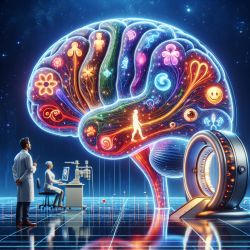Introduction
In the realm of speech-language pathology, the integration of gesture into therapeutic practices holds transformative potential. Recent research, such as the study by Clough and Duff (2020), underscores the profound role gestures play in communication and cognition, particularly in individuals with neurogenic communication disorders. This blog explores how practitioners can harness these insights to enhance therapeutic outcomes for children.
The Power of Gesture
Gestures are more than mere hand movements; they are a fundamental component of language that enrich the communicative context. According to Clough and Duff (2020), gestures and speech share a common conceptual origin, working in tandem to convey meaning. This integration is especially beneficial in populations with neurogenic communication disorders, where gestures can bridge gaps in verbal communication.
Implications for Therapy
The research highlights several key implications for speech therapists:
- Enhanced Communication: Gestures can convey spatial and motoric information often omitted in speech, providing a richer communicative context.
- Cognitive Support: Gestures facilitate cognitive processes, aiding in problem-solving, learning, and memory retention.
- Therapeutic Integration: Incorporating gestures into therapy can enhance language rehabilitation, particularly in aphasia and cognitive-communication disorders.
Practical Applications
Practitioners can leverage these insights by:
- Encouraging Gesture Use: Allow children to use gestures during therapy sessions to support verbal communication and cognitive processing.
- Gesture-Speech Integration: Develop activities that integrate gestures with speech to reinforce language learning and memory.
- Observational Learning: Utilize videos or live demonstrations of gestures to enhance comprehension and retention in children with language impairments.
Encouraging Further Research
While current research underscores the potential of gestures in therapy, there remains a vast field for exploration. Practitioners are encouraged to contribute to this growing body of knowledge by conducting further research on the efficacy of gesture-based interventions in diverse populations.
To read the original research paper, please follow this link: The Role of Gesture in Communication and Cognition: Implications for Understanding and Treating Neurogenic Communication Disorders.










